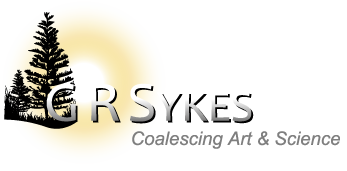Cell Line Species Identification
Mitochondria-Targeting PCR and CO1 Barcode Sequence Analyses as Alternatives to Isoenzymology
By Greg Sykes, ATCC
ABSTRACT: Species identification is an integral part of cell culture authentication and helps identify cross-contaminated or misidentified animal cell lines. Karyotyping is time-consuming, expensive, and may require data analysis expertise. Isoenzyme analysis, the gold standard for animal species identification, is no longer an option with discontinued reagent production. Here, two species identification consensus standards are recommended to replace isoenzymology. In the polymerase chain reaction (PCR)-based assay, primers target mitochondrial genome regions of fifteen of the most common species employed in cell culture. A sample identification PCR confirms the putative species; a cross contamination multiplex uses the full primer set except for the primers targeting the listed culture species and amplifies any contaminant DNA present. Animal cells from fish, insects, and other species not covered in the PCR assay may be identified through sequence-based “DNA Barcoding,” which examines a 648-bp region of the semi-conserved cytochrome oxidase I (CO1) gene after amplification via universal primers. The resulting sequence data are compared against a database, populated with high quality-score reference sequences, to identify the species. The previously published DNA Barcode (ASN-0003) and the PCR-Based (ASN-0004) consensus standards under development are two complementary analytical techniques facilitating species identification of anything from research to production-scale cell-based applications.
This seminar was presented at the International Society for BioProcess Technology (ISBioTech) 4th Fall Meeting, on December 13, 2016, in Virginia Beach, Virginia. It is the latest incarnation of molecular-based techniques used to identify animal species based on DNA material and provides the latest update in standardizing the two-prong analysis approach. A copy of the presentation is viewable in two PDF formats:
- with notes and speaking points is available for viewing here.
- full screen images of slides only, click here.
References cited within the presentation:
American Type Culture Collection Standards Development Organization Workgroup ASN-0003 (Almeida J, Alston-Roberts C, Bauer B, Burnett E, Cole K, Cooper J, Cooper JK, de Mars M, Elmore E, Furtado M, Hanner R, Kohara A, Korch C, Nims R, Oien N, Reid Y, Schindel, DE, Schlottmann S, Sohrabi A, Stoeckle M, Sykes G). 2015. Species-Level Identification of Animal Cells through Mitochondrial Cytochrome c Oxidase Subunit 1 (CO1) DNA Barcodes. ANSI/ATCC ASN-0003-2015. Copyrighted by ATCC and the American National Standards Institute (ANSI).
http://webstore.ansi.org/RecordDetail.aspx?sku=ANSI%2fATCC+ASN-0003-2015
Cooper, Jason, Greg Sykes, Steve King, Karin Cottrill, Natalia V. Ivanova, Robert Hanner, and Pranvera Ikonomi. 2007. Species identification in cell culture: a two-pronged molecular approach. In Vitro Cellular & Developmental Biology – Animal 43(10):344-351. http://www.springerlink.com/content/rp8142p07444t134/
Hebert, Paul D.N., Alina Cywinska, Shelley L. Ball, and Jeremy R. deWaard. 2003. Biological identifications through DNA barcodes. Proceedings of the Royal Society B: Biological Science 270(1512):313-321. http://www.barcoding.si.edu/BackgroundPublications/Hebert_et_al_2003_DNABarcodes.pdf
Hukku, B., D.M. Halton, M. Mally, W.D. Peterson, Jr. 1984. Cell characterization by use of multiple genetic markers. In Eukaryotic Cell Cultures, R.T. Acton and J.D. Lynn, (editors.). New York, Plenum Publishing Co.:13-31.
Parodi, B., O. Aresu, D. Bini, R. Lorenzini, F. Schena, P. Visconti, M. Cesaro, D. Ferrera, V. Andreotti, and T. Ruzzon. 2002. Species identification and confirmation of human and animal cell lines: a PCR-based method. Biotechniques 32(2):432–440. http://www.biotechniques.com/multimedia/archive/00014/02322rr05_14676a.pdf
